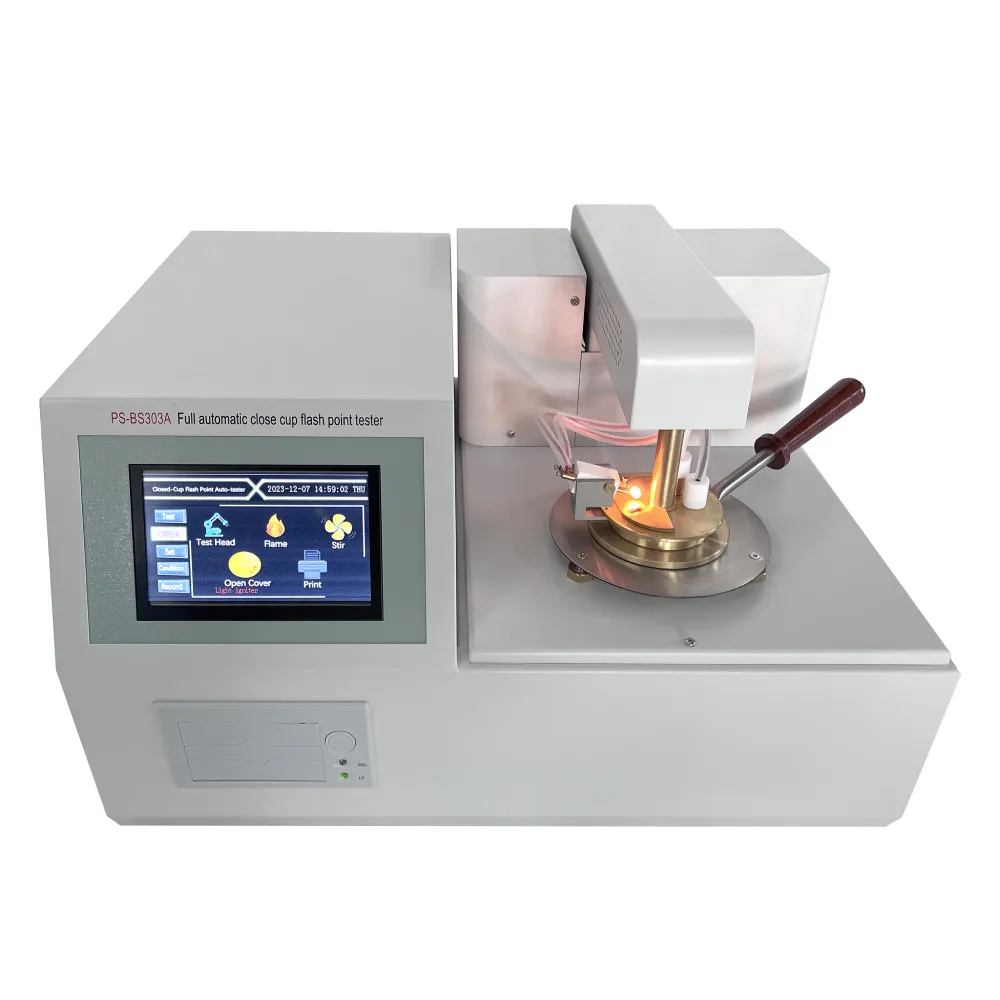TEL:
+86-0312-3189593
 English
English

Telephone:0312-3189593

Email:sales@oil-tester.com

-
 Afrikaans
Afrikaans -
 Albanian
Albanian -
 Amharic
Amharic -
 Arabic
Arabic -
 Armenian
Armenian -
 Azerbaijani
Azerbaijani -
 Basque
Basque -
 Belarusian
Belarusian -
 Bengali
Bengali -
 Bosnian
Bosnian -
 Bulgarian
Bulgarian -
 Catalan
Catalan -
 Cebuano
Cebuano -
 China
China -
 China (Taiwan)
China (Taiwan) -
 Corsican
Corsican -
 Croatian
Croatian -
 Czech
Czech -
 Danish
Danish -
 Dutch
Dutch -
 English
English -
 Esperanto
Esperanto -
 Estonian
Estonian -
 Finnish
Finnish -
 French
French -
 Frisian
Frisian -
 Galician
Galician -
 Georgian
Georgian -
 German
German -
 Greek
Greek -
 Gujarati
Gujarati -
 Haitian Creole
Haitian Creole -
 hausa
hausa -
 hawaiian
hawaiian -
 Hebrew
Hebrew -
 Hindi
Hindi -
 Miao
Miao -
 Hungarian
Hungarian -
 Icelandic
Icelandic -
 igbo
igbo -
 Indonesian
Indonesian -
 irish
irish -
 Italian
Italian -
 Japanese
Japanese -
 Javanese
Javanese -
 Kannada
Kannada -
 kazakh
kazakh -
 Khmer
Khmer -
 Rwandese
Rwandese -
 Korean
Korean -
 Kurdish
Kurdish -
 Kyrgyz
Kyrgyz -
 Lao
Lao -
 Latin
Latin -
 Latvian
Latvian -
 Lithuanian
Lithuanian -
 Luxembourgish
Luxembourgish -
 Macedonian
Macedonian -
 Malgashi
Malgashi -
 Malay
Malay -
 Malayalam
Malayalam -
 Maltese
Maltese -
 Maori
Maori -
 Marathi
Marathi -
 Mongolian
Mongolian -
 Myanmar
Myanmar -
 Nepali
Nepali -
 Norwegian
Norwegian -
 Norwegian
Norwegian -
 Occitan
Occitan -
 Pashto
Pashto -
 Persian
Persian -
 Polish
Polish -
 Portuguese
Portuguese -
 Punjabi
Punjabi -
 Romanian
Romanian -
 Russian
Russian -
 Samoan
Samoan -
 Scottish Gaelic
Scottish Gaelic -
 Serbian
Serbian -
 Sesotho
Sesotho -
 Shona
Shona -
 Sindhi
Sindhi -
 Sinhala
Sinhala -
 Slovak
Slovak -
 Slovenian
Slovenian -
 Somali
Somali -
 Spanish
Spanish -
 Sundanese
Sundanese -
 Swahili
Swahili -
 Swedish
Swedish -
 Tagalog
Tagalog -
 Tajik
Tajik -
 Tamil
Tamil -
 Tatar
Tatar -
 Telugu
Telugu -
 Thai
Thai -
 Turkish
Turkish -
 Turkmen
Turkmen -
 Ukrainian
Ukrainian -
 Urdu
Urdu -
 Uighur
Uighur -
 Uzbek
Uzbek -
 Vietnamese
Vietnamese -
 Welsh
Welsh -
 Bantu
Bantu -
 Yiddish
Yiddish -
 Yoruba
Yoruba -
 Zulu
Zulu
ਫਰ. . 14, 2025 16:34
Back to list
on load and off load tap changing transformer
The transformer load loss test is a critical procedure in ensuring the operational efficiency and longevity of transformers in electrical grids. Conducting an accurate transformer load loss test is not just about maintaining regulatory compliance; it's a safeguard against potential failures that could lead to costly downtime and significant energy inefficiency.
The authority of those conducting these tests cannot be overstated. Technicians must have extensive training and a deep understanding of transformer physics, as well as proficiency in the latest testing standards and safety protocols to ensure both the accuracy of the results and the safety of personnel. Personnel should be familiar with relevant standards such as those set by the Institute of Electrical and Electronics Engineers (IEEE) and the International Electrotechnical Commission (IEC), which guide the testing procedures and specifications. Trustworthiness in results is key to actionable insights from load loss tests. Independent verification of test procedures and results, through peer reviews and third-party audits, can provide reassurance that the test results are reliable and can form a firm basis for strategic decisions regarding transformer operation, maintenance, and procurement. A cornerstone of a trustworthy process is detailed documentation. Recording every step of the test procedure, from the configuration of the setup to the final results and statistical analysis, ensures traceability and transparency. This documentation not only fosters trust but also aids in the training of new technicians and the standardization of future tests. In conclusion, transformer load loss testing is far beyond a routine maintenance procedure. It requires a blend of expertise, strong adherence to international standards, meticulous attention to environmental conditions, and an unwavering commitment to accuracy and transparency. When conducted thoroughly, these tests can reveal crucial insights into transformer health and performance, helping utilities and industries avoid unwanted outages and optimize their energy efficiency.


The authority of those conducting these tests cannot be overstated. Technicians must have extensive training and a deep understanding of transformer physics, as well as proficiency in the latest testing standards and safety protocols to ensure both the accuracy of the results and the safety of personnel. Personnel should be familiar with relevant standards such as those set by the Institute of Electrical and Electronics Engineers (IEEE) and the International Electrotechnical Commission (IEC), which guide the testing procedures and specifications. Trustworthiness in results is key to actionable insights from load loss tests. Independent verification of test procedures and results, through peer reviews and third-party audits, can provide reassurance that the test results are reliable and can form a firm basis for strategic decisions regarding transformer operation, maintenance, and procurement. A cornerstone of a trustworthy process is detailed documentation. Recording every step of the test procedure, from the configuration of the setup to the final results and statistical analysis, ensures traceability and transparency. This documentation not only fosters trust but also aids in the training of new technicians and the standardization of future tests. In conclusion, transformer load loss testing is far beyond a routine maintenance procedure. It requires a blend of expertise, strong adherence to international standards, meticulous attention to environmental conditions, and an unwavering commitment to accuracy and transparency. When conducted thoroughly, these tests can reveal crucial insights into transformer health and performance, helping utilities and industries avoid unwanted outages and optimize their energy efficiency.
Previous:
Next:
Latest news
-
Testing Equipment Industry Sees Major Advancements in 2025: Smart & Precision Technologies Lead the WayNewsJun.06,2025
-
Applications of Direct Current Generators in Renewable Energy SystemsNewsJun.05,2025
-
Hipot Tester Calibration and Accuracy GuidelinesNewsJun.05,2025
-
Digital Circuit Breaker Analyzer Features and BenefitsNewsJun.05,2025
-
Benefits of Real-Time Power Quality Monitoring Devices for Industrial EfficiencyNewsJun.05,2025
-
Earth Fault Loop Testing in High-Rise Building Electrical SystemsNewsJun.05,2025



